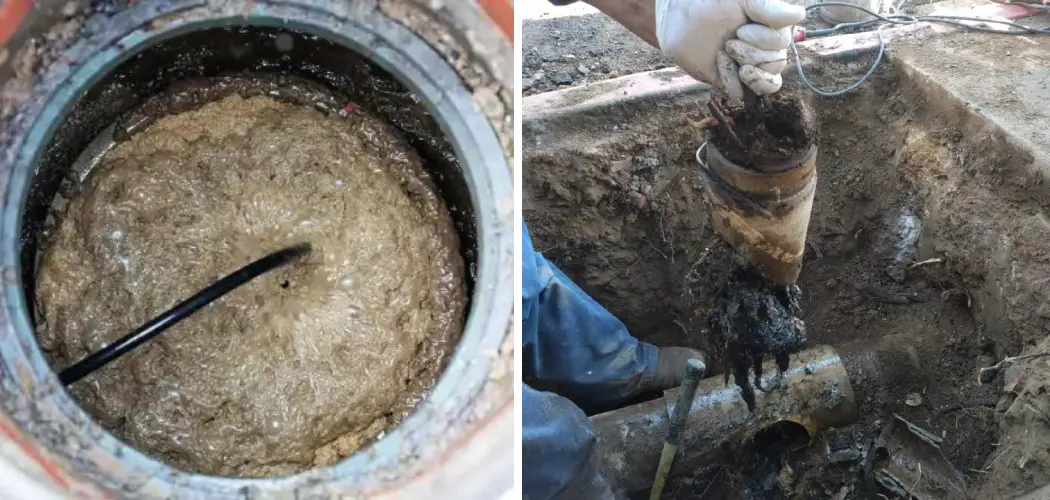Lateral lines, an essential component of your property’s septic system, play a crucial role in the safe and efficient disposal of wastewater. However, when these lines become clogged, it can lead to a range of problems, from unpleasant odors to serious backup issues that can affect the health and comfort of your home environment. Identifying the early signs of clogged lateral lines is key to preventing more severe complications.
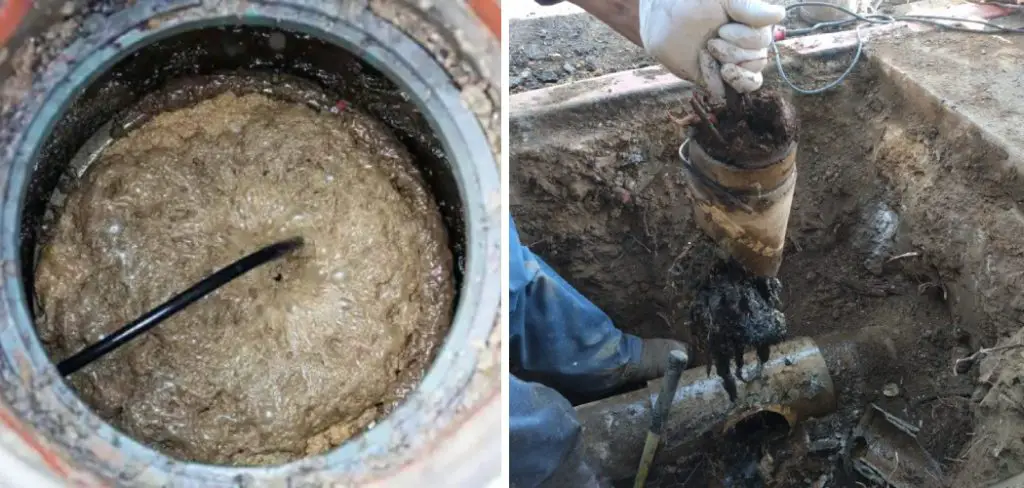
In this guide on how to know if lateral lines are clogged, we will explore the symptoms of clogged lateral lines, effective troubleshooting steps, and maintenance tips to ensure your septic system operates smoothly.
What is a Lateral Line?
A lateral line, also known as a leach field or drain field, is an underground system of perforated pipes that transport wastewater from your septic tank to the surrounding soil for filtration and purification.
It consists of several interconnected pipes buried in trenches with layers of gravel and soil on top. As wastewater flows through these pipes, it gets filtered by microorganisms and eventually returns to the groundwater supply.
Conducting Visual Inspections
Signs of Clogged Lateral Lines
The first step in identifying if your lateral lines are clogged is to visually inspect the area around your drain field. Some common signs of a clogged lateral line include:
Pooling Water:
If you notice standing water on or near your drain field, it could indicate that the pipes are blocked and not properly dispersing wastewater. This can also lead to soggy patches or a strong sewage odor in your yard.
Slow Draining:
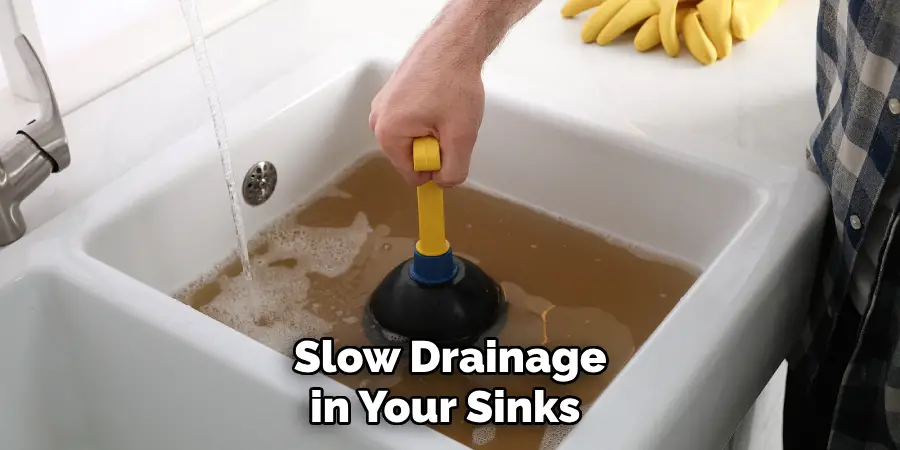
If you experience slow drainage in your sinks, toilets, or showers, it could be a sign that the lateral lines are clogged. This is because the water has nowhere to go and will eventually back up into your household fixtures.
Unpleasant Odors:
A foul smell around your drain field or inside your home could be a clear indication of clogged lateral lines. As wastewater accumulates in the pipes, it can produce a strong sewage odor that is hard to ignore.
Signs and Symptoms of Clogged Lateral Lines
Apart from visual inspections, there are other tell-tale signs that can help you determine if your lateral lines are clogged. These include:
Gurgling Sounds:
If you hear gurgling noises coming from your drains or toilets when they are not in use, it could be a sign of a blockage in the lateral lines.
Sewage Backup:
A severe clog in your lateral lines can cause sewage to back up into your home through drains or toilets. This is a serious issue that requires immediate attention from a professional.
High Water Levels in the Septic Tank:
During routine maintenance of your septic tank, if you notice unusually high water levels, it could indicate that the lateral lines are clogged and not properly dispersing wastewater.
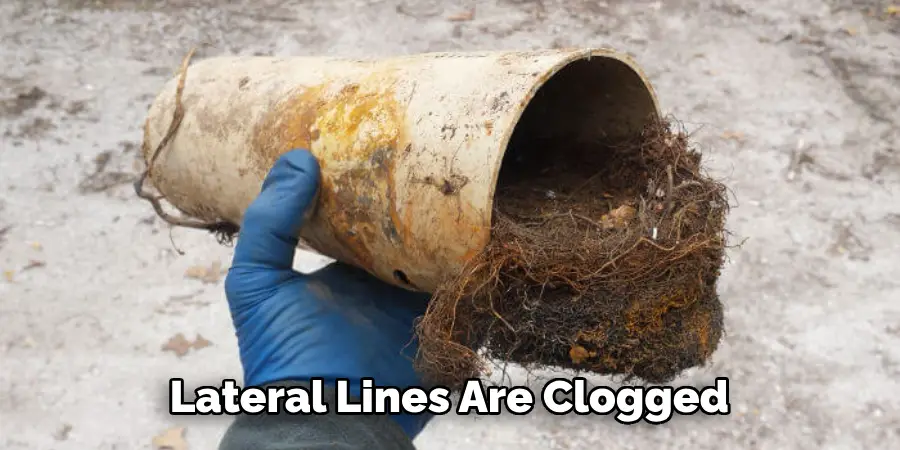
Needed Materials
To conduct a proper visual inspection, you will need the following materials:
Rubber Boots or Waterproof Shoes:
As you will be walking around your septic system, it is essential to wear proper footwear that can withstand wet and muddy conditions.
Gloves:
Wearing gloves can protect your hands from coming into contact with any harmful bacteria or waste products during the inspection.
Flashlight:
A flashlight will come in handy if you need to inspect the pipes inside the drain field trenches.
Shovel:
In case you need to dig up any areas for better visibility, a shovel will be necessary.
10 Step-by-step Guidelines on How to Know if Lateral Lines Are Clogged
Step 1: Conducting Visual Inspections:
Use the above-mentioned materials to conduct a thorough visual inspection of your drain field and its surroundings. It is recommended to do this after a few days of heavy rain as the ground will be saturated, making it easier to spot any issues.
The inspection should be done during daylight hours for better visibility. You can also repeat the inspection at night with a flashlight to check for any signs of pooling water. It is crucial to take note of any unusual sights, sounds or smells. You can also take pictures or videos of the inspection to compare with future inspections.
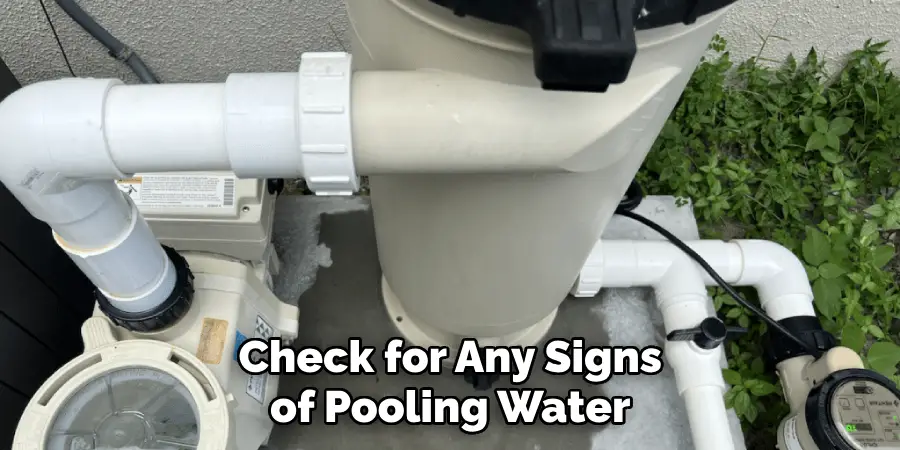
Step 2: Check for Standing Water:
Walk around the drain field and look for any areas with standing water or soggy patches. This could indicate that the lateral lines are clogged and wastewater is not being properly dispersed into the soil. You can also use a shovel to dig up some of the areas for a closer inspection.
If you find any standing water, it is a clear sign of a clogged lateral line. The water may also have a strong sewage odor. You should also take note of the location and size of the affected area for future reference. But be cautious not to disturb the pipes or damage any components of the septic system.
Step 3: Observe the Grass:
Healthy lateral lines should support the growth of lush green grass above them. If you notice any areas with dead or dying grass, it could indicate that the pipes below are clogged and preventing proper filtration of wastewater. The grass may also be greener and more vibrant in the areas where wastewater is not reaching due to blockages.
It is essential to mark these areas for further investigation. But keep in mind that other factors such as overwatering or lack of sunlight, could also contribute to dead grass. This is why conducting a visual inspection after heavy rain is recommended. The excess water will help expose any underlying issues.
Step 4: Check for Slow Draining:
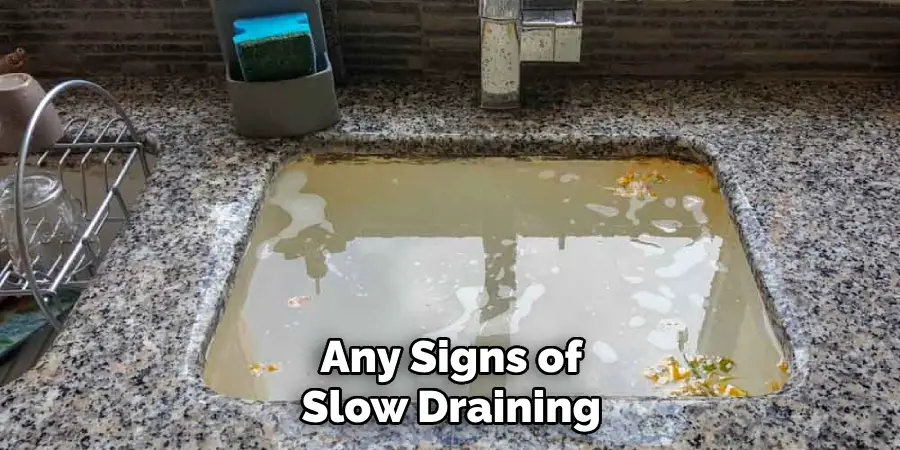
Inside your home, pay attention to any signs of slow draining. If you notice that water is taking longer than usual to drain from sinks, bathtubs, or toilets, it could be a sign of a clogged lateral line. This is because the wastewater has nowhere to go and will eventually back up into your household fixtures. You can also check the water levels in your toilets after flushing.
If the water rises higher than normal and takes longer to subside, it could be a sign of a clog. It is essential to keep a record of which fixtures are experiencing slow draining for future reference. You can also check for slow draining during times when water usage is at its peak, such as during laundry or shower time.
Step 5: Look for Unpleasant Odors:
A strong sewage odor around your drain field or inside your home is a clear indication of clogged lateral lines. As wastewater accumulates in the pipes, it can produce a foul smell that is hard to ignore.
Pay attention to any unusual smells during your visual inspection and take note of their intensity and location. But keep in mind that other factors such as a faulty septic tank or damaged pipes, could also cause foul odors. You may need to call a professional for further investigation. It is crucial to address any unpleasant odors immediately as they can be harmful to your health.
Step 6: Listen for Gurgling Sounds:

If you hear gurgling noises coming from your drains or toilets when they are not in use, it could be a sign of a blockage in the lateral lines. As wastewater tries to flow through the clogged pipes, it can produce air bubbles that create gurgling sounds. These sounds may be more noticeable at night when there is less ambient noise in your home.
Take note of which fixtures are making these noises for future reference. It is crucial to address this issue immediately as it can lead to further damage if left untreated. You may need to call a professional to clear the clog. It is also recommended to avoid using your septic system until the issue is resolved.
Step 7: Check the Septic Tank:
During routine maintenance of your septic tank, you can also check for any signs of a clogged lateral line. If the water level in the tank is unusually high, it could indicate that wastewater is not properly dispersing into the drain field. It is essential to have your septic tank pumped regularly to prevent any issues with your lateral lines.
It is also recommended to have a professional inspect your septic system every 3-5 years for any signs of damage or malfunction. You can also ask for their advice on maintaining your septic system to prevent future clogs. But remember, only a licensed professional should handle septic tank maintenance.
Step 8: Look for Signs of Tree Roots:

Tree roots are a common cause of clogs in lateral lines. As they grow, they can infiltrate the pipes and create blockages by trapping debris and causing them to collapse. During your visual inspection, look for any signs of tree roots near your drain field or septic tank. You may notice raised areas in the ground or trees that are leaning toward your septic system.
If you suspect that tree roots are causing issues, it is best to consult a professional for their removal. You may also need to consider relocating your septic system to prevent future clogs. It is crucial to address this issue immediately as it can cause significant damage to your septic system.
Step 9: Identify the Location of Lateral Lines:
If you have access to a map of your septic system, locate the lateral lines and mark their location on your property. This will help you track any changes or issues in the future quickly. If you do not have a map, you can also use a probe or shovel to locate and mark the lateral lines on your property.
It is crucial to know their location for maintenance purposes and to prevent any construction or digging in these areas. But keep in mind that it is not recommended to dig near your lateral lines as it can cause damage and lead to costly repairs.
Step 10: Consider Using Bio-Enzymes:
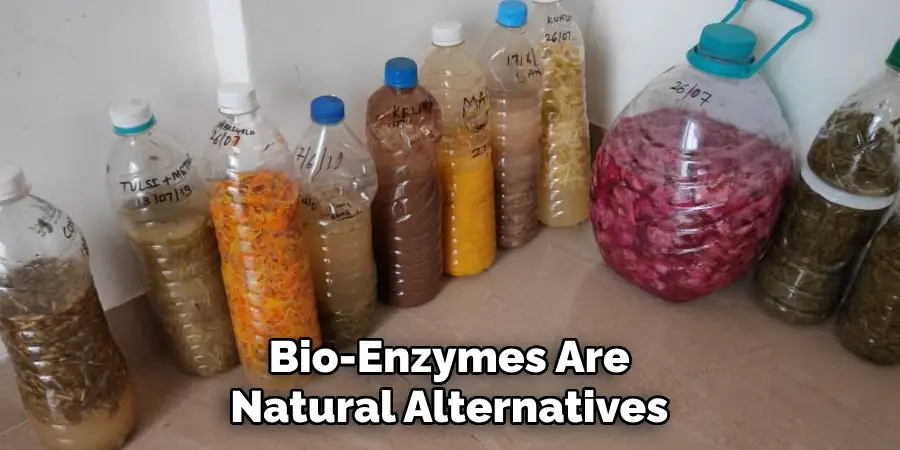
Bio-enzymes are natural alternatives to chemical drain cleaners that can help prevent clogs in your lateral lines. These enzymes break down organic matter and promote proper bacterial growth, which helps maintain a healthy septic system. You can use bio-enzymes as a preventative measure by pouring them down your drains regularly.
They are safe for the environment and will not harm your pipes or septic system. However, keep in mind that they may take longer to work than chemical cleaners, so it is essential to use them consistently for the best results. Additionally, you can also consider using other eco-friendly practices such as conserving water usage and avoiding flushing non-biodegradable items to help maintain healthy lateral lines.
Remember, regular maintenance and early detection of clogs can help prevent costly repairs in the future. By following these steps on how to know if lateral lines are clogged, you can ensure that your lateral lines function properly and keep your septic system running smoothly for years to come.
So, take the time to inspect and maintain your lateral lines regularly to avoid any potential problems. Your wallet and the environment will thank you. So go ahead and give your lateral lines some love! Happy draining!
Preventive Maintenance Practices
Aside from knowing how to detect clogs in your lateral lines, it is also essential to practice preventive maintenance to keep them functioning properly. Here are a few tips on how to maintain healthy lateral lines:
Schedule Regular Inspections:
Make sure to have a professional inspect your septic system and lateral lines every 3-5 years for any signs of damage or malfunction. This can help identify and address any potential issues before they become major problems.
Pump Your Septic Tank Regularly:
It is crucial to have your septic tank pumped regularly, typically every 3-5 years, depending on household size and usage. This will prevent solid waste from accumulating and clogging your lateral lines.
Conserve Water Usage:
Excessive water usage can put a strain on your lateral lines and septic system. Make sure to conserve water by fixing any leaks, using efficient appliances, and avoiding unnecessary water use.
Avoid Flushing Non-Biodegradable Items:
Flushing non-biodegradable items such as wipes, hygiene products, and cooking grease can cause clogs in your lateral lines. Remember to only flush toilet paper and dispose of other items properly.
Use Eco-Friendly Drain Cleaners:
Chemical drain cleaners can harm your lateral lines and septic system. Opt for natural alternatives such as bio-enzymes to maintain a healthy septic system without damaging the environment.
Environmental and Health Considerations:
Clogged lateral lines not only cause inconvenience and expensive repairs but can also have negative impacts on the environment and your health. Untreated wastewater from clogs can contaminate groundwater, lakes, and streams, leading to water pollution.
This can harm aquatic life and affect the quality of our drinking water. Moreover, clogs in lateral lines can also cause foul odors that can be harmful to your health and the surrounding environment. By properly maintaining your lateral lines, you are not only saving money but also protecting the environment and promoting good health for yourself and others.
Frequently Asked Questions
Q: Can I Fix a Clog in My Lateral Lines Myself?
A: It is not recommended to try to fix a clog in your lateral lines yourself as it can cause more damage and be hazardous. It is best to consult a professional for proper inspection and repair.
You can, however, use preventive measures such as bio-enzymes to help prevent clogs in the future.
Q: How Often Should I Inspect My Lateral Lines?
A: You should have your lateral lines inspected every 3-5 years by a professional. However, if you suspect any issues or changes in your septic system, it is best to have them inspected immediately.
But make sure not to dig or damage your lateral lines in the process. You can also regularly monitor your lateral lines by checking for any backups, slow draining, and foul odors.
Q: Can Tree Roots Cause Clogs in Lateral Lines?
A: Yes, tree roots can cause clogs in lateral lines by growing into and obstructing the pipes. It is crucial to address this issue promptly before it causes significant damage to your septic system. If you suspect tree roots are causing clogs in your lateral lines, consult a professional for proper removal and repair.
Q: Are Chemical Drain Cleaners Safe to Use?
A: Chemical drain cleaners can be harmful to your lateral lines and septic system. It is best to use eco-friendly alternatives such as bio-enzymes to prevent clogs without damaging the environment. You can also consult a professional for safe and effective drain cleaning methods.
Conclusion
In conclusion, recognizing the signs of clogged lateral lines is crucial for maintaining the efficiency and longevity of your septic system. Symptoms such as water backing up in drains, slow flushing toilets, and soggy areas in your yard are clear indicators that your lateral lines may need attention.
Regular maintenance, including periodic inspections and cautious use of water and non-biodegradable materials, can prevent most blockage issues. By staying vigilant and proactive, you can ensure that your septic system functions smoothly and avoid costly repairs in the future. Thanks for reading this article on how to know if lateral lines are clogged.

